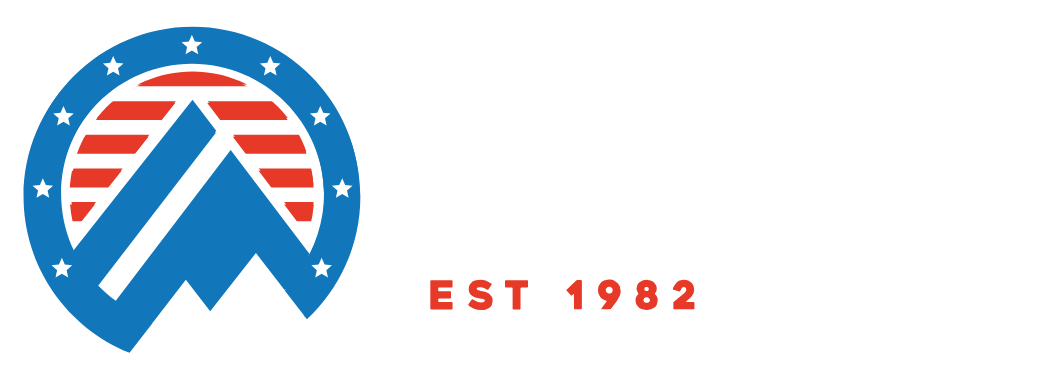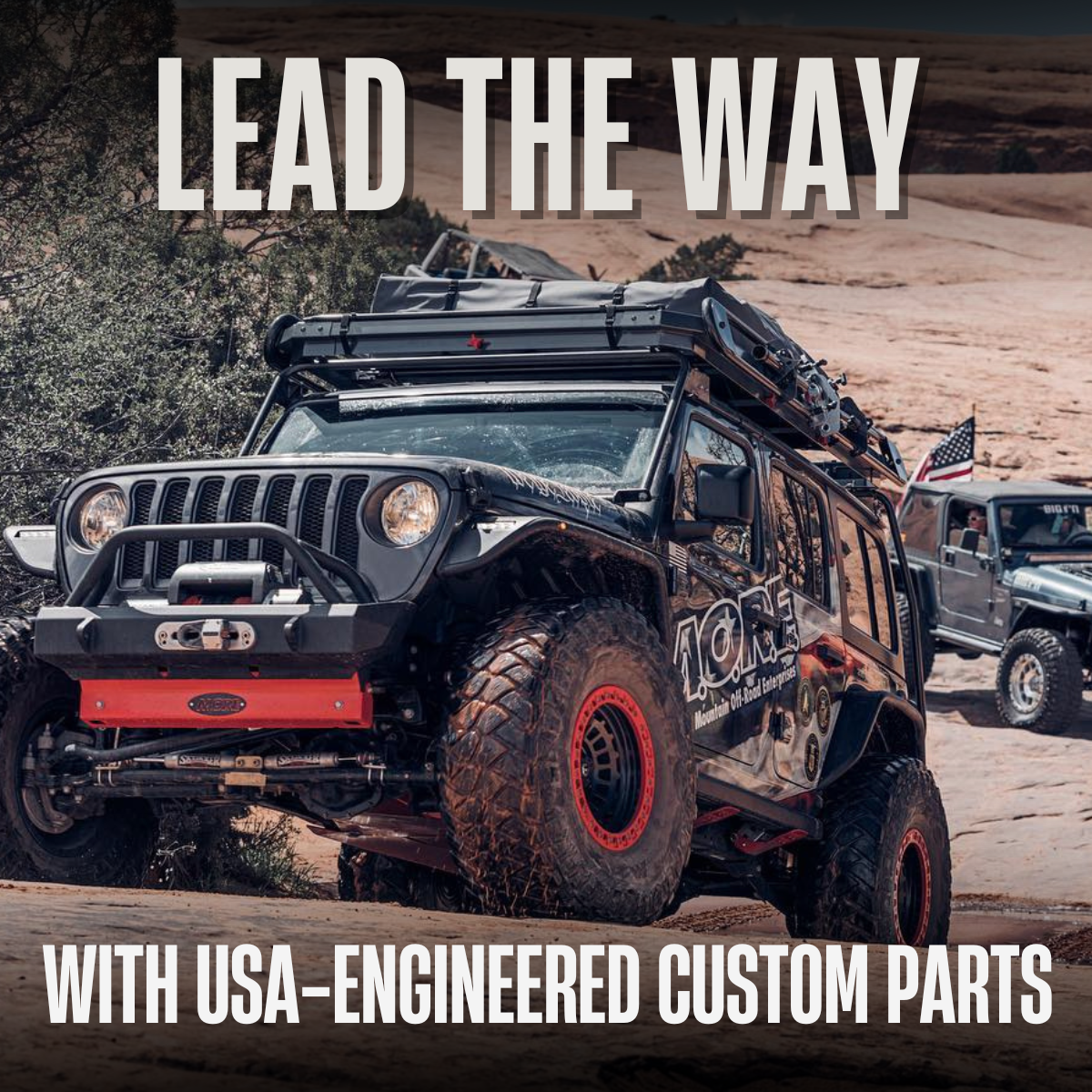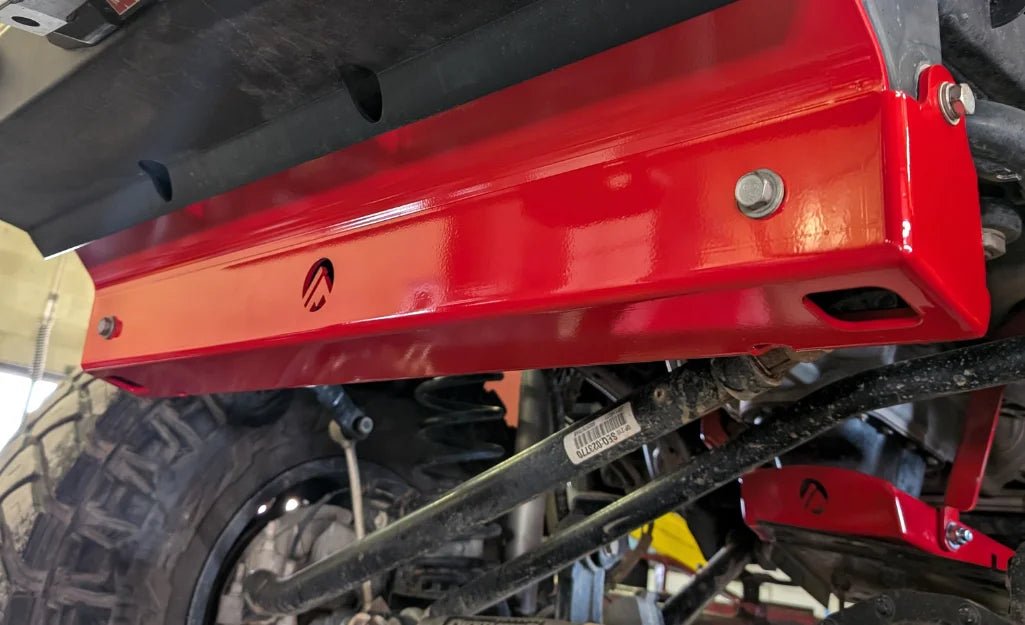Overview
Every off-roader has been there: standing in a garage or scrolling through a product page, wondering if that shiny new bumper, skid plate, or armor upgrade is worth the cash. The problem? In a market crowded with off road brands, it’s hard to tell what’s built for real trails and what’s destined to fold at the first hit. And let’s be honest—nothing stings more than bolting on a “deal” that turns into wasted money halfway up a rocky climb.
That’s exactly why we built this guide… and our gear. We’re not here to hand out a shopping list of must haves for off road. Instead, we’ll dig into the mistakes that separate strong rigs from those that bleed cash on weak parts. We’ll talk about welds that crack, reviews that lie, and the hidden cost of “cheap.” We’ll also look at how real-world punishment—on the kind of off road terrain that chews up steel—reveals what marketing can’t.
If you’re serious about keeping your Jeep or Toyota in one piece, this is for you. Whether you’re hunting for jeep body armor or scouting the best website to buy jeep parts, the lessons here will keep you from falling into traps that too many off-roaders discover the hard way.
Table of Contents
Off Roading Essentials That Matter the Most Before You Buy
#1 — Materials and Welds
#2 — Wrong & Right Reviews
#3 — Understanding the Real Value
#4 — Real-World Testing
#5 — Warranty and Long-Term Support
Why Off Roading Essentials Matter Before You Buy
What Separates Quality from Hype in Off Road Brands
The difference between surviving a season and surviving a decade usually comes down to what most buyers never see: the steps of design and fabrication that happen before a part hits the shelf. Real must haves for off road aren’t defined by a product name—they’re defined by steel grades, weld codes, coatings, and fitment. Miss one of those, and no amount of flashy branding saves you on the trail.
Take steel. The best offroad parts brands use certified U.S. plate steel, often ASTM A36 or stronger, because consistency in carbon content means consistency in strength. Cheap imports cut corners by adding boron to harden soft metal, which makes it brittle instead of tough. That’s why you’ll find “bargain” bumpers and jeep yj skid plates that shatter instead of bend when they hit granite. And once a weld starts running across metal with inconsistent chemistry, cracks follow fast.
Weld quality is another tell. AWS D1.1 code welds are continuous, deep-penetrating, and inspected; knockoff gear is often stitched together with short beads that look strong until you pry them apart with a crowbar. Compare a precision-built cj5 front bumper or jeep jk body armor against a mass-produced import: one ties recovery points straight into frame rails, the other welds decorative tabs onto sheet metal. You don’t need an engineering degree to see which one you’d trust on a winch pull.
Even coatings matter. Powder coating done right means blasting to NACE standards before the coat goes on. Skipping that step is why low-cost armor rusts after the first winter. High-end armor—whether it’s a cj7 rear bumper or skid plate jeep wrangler—gets blasted, primed, and layered to resist salt, sand, and pressure washes. That’s the difference between trail gear and throwaway gear.
And then there’s fitment. A part like 4runner offroad parts isn’t “just a plate.” It’s engineered with cutouts for oil drains, airflow, and access points. Universal pieces copy the shape but skip those clearances, forcing you to drop the entire plate for an oil change or cooking your drivetrain by trapping heat. That’s how poor design silently eats into your time, money, and confidence.
#1 — Ignoring Materials and Welds
When people talk about “cheap armor,” they’re not just talking about price. They’re talking about corners cut at every stage of production. A lot of overseas factories build parts for volume, not abuse. Steel is one of the first shortcuts: instead of consistent, structural-grade plate, many imports use thinner sheet or mixes with inconsistent chemistry. Sometimes they harden the surface with boron so it looks strong in spec sheets, but that hardness makes the steel brittle. On the trail, brittle doesn’t bend — it cracks. That’s why bargain skid plates or bumpers sometimes split after a single ledge climb. (And if you want to dig into the metallurgy side, engineers on Reddit have broken down exactly why imported steel often underperforms.)
The next shortcut is welding. High-end welds are continuous and fully penetrated. Cheap welds are “stitched” every few inches, or laid cold so they only sit on the surface. On a smooth road that might hold. On a trail? A stitched seam can unzip like a zipper under torsion. That’s why you’ll hear horror stories of recovery tabs tearing right off the bumper during a pull. Imagine putting faith in a cj5 front bumper or jeep yj skid plate welded with shortcuts like that — the failure isn’t just inconvenient, it’s dangerous.
And coatings? Imports often blast poorly or skip prep altogether. That’s why rust blooms under powder coat after the first salty winter. A rusting jeep tj rear bumper or cj5 rear bumper doesn’t just look bad; corrosion weakens mounting points and eats into welds until the whole piece is compromised.
So why does this matter to you? Because ignoring materials and welds leads directly to broken jeep body armor, bent jk body armor, or rusted-out cj7 rear bumper years earlier than it should. Up front, U.S. steel and certified welds might cost more, but every season you keep your body armor jeep intact is a season you’re not re-buying the same part. That’s the difference between gear that protects your rig across years of trails and gear that empties your wallet with every failure.
If you want to go deeper on how U.S.-made materials and fabrication standards stack up against imports—why they matter, how they’re tested, and what that means for trail survivability—take a look at our in-depth guide on buying American-made off-road parts. It’s where we pulled back the curtain on the standards that make real armor stand the test of time.


#2 — Trusting the Wrong Reviews
One of the oldest tricks in the industry is the label “Assembled in USA.” It sounds reassuring, but in practice it often means the steel, welds, and hardware are imported, then bolted together domestically. The distinction matters: parts marketed this way are rarely built to the standards you expect from best offroad parts brands. It’s packaging, not proof of quality.
The same kind of shortcuts show up in reviews. Many off-road suppliers launch products with no reviews at all, or with walls of five-star ratings that look too clean. That isn’t a sign of excellence—it’s a warning sign. Without verification, brands can delete negative feedback, pay for bulk reviews, or suppress customer complaints. A real product—whether a jeep body armor, cj7 rear bumper, or jeep yj skid plate—will always have a range of experiences because real trail use brings out strengths and weaknesses.
The most reliable feedback comes from verified systems that confirm a purchase before publishing a review. That’s where apps like Yotpo come in. Independent platforms like Yotpo are designed to eliminate fake testimonials, showing only feedback from actual buyers. This means if someone leave review about installing a cj5 front bumper or testing a jk body armor on a rocky climb, you can trust it came from first-hand use—not a marketing department.
We’ve built our own review process around that principle. You’ll find good, bad, and everything in between on our customer reviews page, covering parts from jeep tj bumpers for sale to jeep jku body armor. Because the only way reviews actually serve buyers is if they’re transparent, verified, and unfiltered. Anything else is just noise.



#3 — Forgetting The True Cost of Affordable Off Road Gear That Fails
At first glance, buying cheap gear feels like a small victory. You scroll past a premium tj jeep front bumper, then spot what looks identical for a third of the price. The pictures shine, the copy sounds convincing, and your wallet whispers “go for it.” It’s the same thrill as grabbing a bargain TV on clearance—you don’t think about longevity, just the quick win.
But the trail exposes shortcuts fast. Picture hitting a ledge and your bargain jeep tj body armor buckles into the rocker panel, leaving sheet metal exposed. Or you’re on a steep climb, winching hard, when tabs on a budget jeep jk tube bumper tear free under load. Recovery turns from controlled to chaotic in seconds. Even skid plates aren’t safe—a thin jeep skid plate may deflect once, but repeated hits crush it into crossmembers and drive components. By contrast, a properly built system—like those in our Armor & Protection collection—absorbs punishment and keeps your rig trail-ready season after season.
Coatings and fitment cut corners too. A knockoff cj7 bumper often arrives with thin powder coat that flakes after one salty winter, rust crawling underneath until welds corrode. Or take “universal” skid systems—fitment issues mean you’ll spend weekends grinding just to make them work, and still end up dropping the entire plate for a simple oil change. What looked like a deal becomes wasted time, constant repairs, and buying twice.
This is where cost-per-year thinking matters. A “cheap” jeep rear bumper replaced twice in five years isn’t cheaper than a premium tj jeep bumper that stays bolted for a decade of trails. Whether it’s jeep interior accessories jk, jeep wrangler armor, or even jlu accessories, the part that keeps performing year after year always ends up being the least expensive choice. Buy once, and your gear earns its keep.
And if quality feels out of reach right now, the smartest play isn’t rolling dice on bargain imports. Subscribe to brands you trust and wait for the right sale. We run seasonal promotions—including our Spend More, Save More events with up to 20% off—and every new customer gets a 10% welcome gift. On top of that, bundle pricing makes upgrading smarter without compromise. You can always find current offers on our Best Deals page.
Because nothing drains a budget faster than buying cheap, breaking fast, and paying twice.



#4 — Believing Marketing Claims: Off Road Terrain Proves Gear Better
You don’t find out what gear is made of from polished ads—you find out on the trail. One of the best tricks for spotting the difference is to check a brand’s community. Look at the tagged section on Instagram: do real off-roaders actually install the parts, tag the brand, and share what happens when the gear meets rock? That’s where you’ll see unfiltered truth. A polished bumper might look great on a product page, but if it folds the first time someone drags it across granite, the community will show you. And if you see gear holding up in recovery pulls, skid plates taking repeated hits, or armor with scars but still intact—that’s proof you can trust.
Here’s an example you can see for yourself: a real-world crash test captured on Instagram.

If you want that kind of durability under your rig, start with proven skid plates.


Choosing Cheap Prices Over Warranty and Long-Term Support
Buying off-road gear is more than grabbing a bumper or skid plate—it’s buying into long-term confidence. Cheap imported parts might look tempting, but when a jeep tj rear bumper bends under a recovery pull or a jeep yj skid plate rusts through after one salty winter, the true cost shows up fast. Imported sellers rarely back their products with real support, and when they do, it often means chasing emails across time zones. By the time you replace a cracked cj5 rear bumper or warped jeep armour, the “deal” is gone.
That’s where American-made gear changes everything. At Mountain Offroad, every piece—from jk body armor to 4runner offroad parts—is covered by our Warranty & Return Policy. If something goes wrong, you’re not left stranded. You’re speaking directly to the team that designed and built your part, whether it’s a cj5 front bumper or a set of jlu accessories. And if you ever need us, you can always contact us.
There’s another advantage: perspective. Imported brands don’t know how a jeep jk tube bumper handles a Colorado winter or what airflow a skid plate jeep wrangler needs in desert heat. We do. Because we design, weld, coat, and test every part here in the U.S., for the rigs and terrain you actually drive. That means when you buy from us, you’re not just buying steel—you’re buying accountability, expertise, and real trail protection that lasts.



Final Thoughts: How to Shop Best Place to Buy Toyota Parts Online and Jeep Upgrades Smartly
At the end of the trail, it’s not about how many parts you bolt on, it’s about whether those parts truly earn their place on your rig. Cheap gear may look tempting in the moment, but it rarely survives the long haul. Quality parts, backed by real warranty and real people, give you something more valuable than a lower price tag ever could: confidence.
That’s the difference between a weekend spent fixing broken gear and a weekend spent exploring new terrain. When you choose a brand that designs, builds, and supports its products here in America, you’re not just buying steel—you’re buying accountability and trust.
So if you’re ready to upgrade, take a look through our full lineup. Whether you’re building for protection, performance, or peace of mind, the smartest investment is the one that lasts.
Build strong now, and the trails will always be waiting.









Leave a comment
This site is protected by hCaptcha and the hCaptcha Privacy Policy and Terms of Service apply.